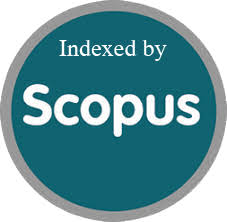Bi-directional Long Short-Term Memory with Bird Mating Optimizer based Spectrum Sensing Technique for Cognitive Radio Networks
Abstract
Cognitive radio networks (CRN) enable the wireless devices to sense the radio spectrum, determine the frequency state channels, and reconfigure the communication variables for satisfying the QoS needs by reducing the energy utilization. In cognitive radio, the detection of principal user signals is crucial for secondary users in order to make the best use of available spectrum (CR). The problem with conventional spectrum sensing approaches is that they have a high rate of missed detections and false alarms, which makes it difficult to make effective use of the spectrum. In instruction to recover the correctness of the detection of free spectrum, deep learning-based spectrum sensing is employed. For resolving the drawbacks of traditional energy detection models, this paper presents a new spectral sensing technique for cognitive radio networks (SST-CRN). Recently published research in spectrum sensing has placed a high value on deep learning that is model-agnostic as a result of this. In particular, long-short term memory (LSTM) networks perform exceptionally well at extracting spatial and temporal information from input data in deep learning. The proposed model, Bidirectional Long Short-Term Memory (Bi-LSTM) with Bird Mating Optimization (BMO), makes it possible to create nonlinear threshold-based systems more quickly and easily than previously possible. The proposed Bi-LSTM with BMO technique involves two stages of operations namely offline and online. The offline stage creates the non-linear threshold value to detect energy. In addition, the online stage automated selects a decision function saved in offline stage for determining the existence of primary user. The experiments were carried out and the results were analyzed using the help of the RadioML2016.10b dataset. A greater spectrum detection performance over previous sensing models has been obtained using a combination of the B-LSTM model and the BMO model, it has been discovered.
Downloads
Copyright (c) 2024 Saraswathi M, Logashanmugam E

This work is licensed under a Creative Commons Attribution-ShareAlike 4.0 International License.
Authors who publish with this journal agree to the following terms:
- Authors retain copyright and grant the journal right of first publication with the work simultaneously licensed under a Creative Commons Attribution-ShareAlikel 4.0 International (CC BY-SA 4.0) that allows others to share the work with an acknowledgement of the work's authorship and initial publication in this journal.
- Authors are able to enter into separate, additional contractual arrangements for the non-exclusive distribution of the journal's published version of the work (e.g., post it to an institutional repository or publish it in a book), with an acknowledgement of its initial publication in this journal.
- Authors are permitted and encouraged to post their work online (e.g., in institutional repositories or on their website) prior to and during the submission process, as it can lead to productive exchanges, as well as earlier and greater citation of published work (See The Effect of Open Access).





.png)
.png)
.png)
.png)
.png)
